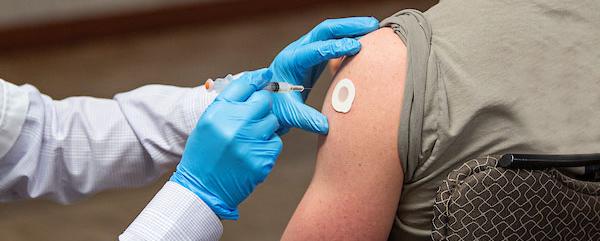
Living in the US
International education


A journey filled with opportunities.
Making the move to the United States might seem a little overwhelming, but we are here to help ease your mind. Explore the following important information about what to expect and prepare for while you live in Indiana.
Maintaining Your Status
Stay up-to-date.
As an international student, you are required to keep your local address updated. If you are in F-1 or J-1 status and you move (or are about to move) to a new address, you must notify United States Citizenship and Immigration Services (USCIS) within 10 days. In order to notify the USCIS, you’ll need to complete the following steps:
- Log in to goPFW.
- On the left side of the main menu page, under Personal Information, select Update Addresses and Phones.
- To update your existing address, click on the current link to the corresponding address; this will take you to the page where you can make changes to your address; be sure to provide the valid date from which you want it to start.
- Come to the our office to fill out an address-change form or email [email protected] to verify the new address in writing.
If you are an undergraduate student, you must take and complete 12 credits each fall and spring semester.
If you are a graduate student, you must take and complete 8 credits each fall and spring semester.
Exception to Full-time Status
United States Citizenship and Immigration Services allows the international student advisor to make exceptions to the full-time requirement in four types of situations. If your current situation qualifies you to drop below full-time enrollment based on one of the four following requirements, please come to the Office of International Education to collect the Exception to Full-time Form. You’ll also need to meet with one of the international-student advisors before the beginning of the semester to see if you qualify for the exception.
Read the information below and prepare the required documentation from your doctor or academic advisor. Then schedule an appointment with the international-student advisor for approval before dropping below full-time enrollment. Here are the exceptions:
- An illness or other medical condition to interrupt or reduce the student’s course of study
- The student must submit a letter from their doctor indicating that they recommend the student take a semester off or to reduce credit load for medical reasons.
- Difficulty understanding the English language, unfamiliar with American teaching methods, or reading requirements
- This exception is generally allowed only during the first semester in an academic program in the United States, not including English as a Second Language training—the academic advisor must recommend a reduced course load for one semester by completing the Exception to Full-time Form.
- An improper level of study
- The academic advisor must confirm that the course level is an improper placement for the student by completing the Exception to Full-time Form and write a separate, detailed letter to explain the situation.
- Last semester before graduation
- The student is expected to graduate at the end of the semester and needs less than the full-time credit load to complete their coursework—the academic advisor must affirm this by completing the Exception to Full-time Form.
According to the US Department of Homeland Security, students on F-1 visa student status are required to finish their program of study by the completion date listed on their I-20 (item number five). However, in certain circumstances, it can be permissible to request a program extension.
Criteria
The program extension can be granted only for documented academic or medical reasons and if the following criteria are met:
- Documentation that the delay was due to academic or medical circumstances (e.g., required summer class to graduate).
- Certification of financial support is provided to meet the requirements to fund the extension (e.g., studies, living expenses)—this required amount will be determined by the Office of International Education once documentation has been received.
- The extension must be requested in a timely manner as determined by the office so that processing allows enough time to issue a new I-20.
If your program end date has expired or you do not meet the eligibility requirements to apply for a program extension, you will have to file for reinstatement with USCIS for F-1 status. Substantial fees may be assessed.
Invalid Reasons to Apply for a Program Extension
To ensure that you meet the requirements for a program extension, please stop by our office prior to submitting the request form. The following are examples of reasons for I-20 extensions that are not valid:
- To enroll in extra courses to improve GPA
- Additional research not required to graduate
- Nonrequired Curricular Practical Training (CPT) (if you graduate you can apply for CPT; see Employment for more details)
- I-20 end date has already passed
Transportation
Getting around the city.
Find the bus route you need, prepare for a driver’s test and get your license, or catch the shuttle during the school year to do some grocery shopping. There are plenty of things to do and see in Fort Wayne, so make sure you know how you can get there.

Weather in Indiana
What to expect and how to prepare.
Indiana weather can be a little unpredictable—you might need a sweatshirt in the morning and shorts by the afternoon. Check out some of our weather resources and tips so you can be ready.
For current weather information visit weather.com or Weather Underground. Type in “Fort Wayne, Indiana” and be sure to seek out information on the typical climate of Fort Wayne.
Students are usually concerned and have questions about the winter weather in Fort Wayne, especially students from warm-weather climates. The fact is that, although it does get cold, with an average temperature range of 19 to 35 degrees Fahrenheit (−7 to 2 degrees Celsius), the weather rarely gets extreme. Typically during the winter days, you will encounter cold temperatures, some ice, and some snow. Prepare for trips to take longer, and be careful. Check out the following to help you be safe and comfortable during the winter.
Clothing
Keep the following information in mind to stay comfortable:
- Cold temperatures can be uncomfortable, and very cold weather can be dangerous; pay attention to the local weather and dress accordingly (often you will hear the term windchill mentioned; this means the wind is high, making the temperature feel much colder than it actually is).
- A large amount of body heat is lost through the head, hands, and feet, so keep these areas warm with hats, earmuffs, gloves, mittens, and boots, and, if necessary, cover your mouth and neck with a scarf.
- Cover your feet well—socks made of cotton or wool work best—and make sure that your shoes are waterproof and have good traction; if you encounter deep snow, boots that cover your ankles are recommended.
- Layer your clothes—it is easier to stay warm if you are wearing layers; wear a T-shirt under another shirt or sweater, and, if necessary, wear long underwear under your pants.
Keep Your Apartment Warm
If you live off campus, heating costs in the winter can become expensive, especially because most of the apartment complexes use electric heat. The following are some tips that will help you save money and stay warm during the winter months (please note that if you are living on campus you don’t have to worry about utility costs, because they are included in your cost of housing):
- Instead of turning your heat up, wear more clothing.
- When going to bed, turn the temperature down and sleep with warm blankets.
- Turn down the temperature when you’re not in the place you live, but do not turn off the heat, as you may risk having your water pipes freeze.
- Cover up places where cold air can come in; use plastic, tape, or caulk over windows and cracks; use a rug for the bottom of your door.
For current weather information visit weather.com or Weather Underground. Type in “Fort Wayne, Indiana” and be sure to seek out information on the typical climate of Fort Wayne.
Students are usually concerned and have questions about the winter weather in Fort Wayne, especially students from warm-weather climates. The fact is that, although it does get cold, with an average temperature range of 19 to 35 degrees Fahrenheit (−7 to 2 degrees Celsius), the weather rarely gets extreme. Typically during the winter days, you will encounter cold temperatures, some ice, and some snow. Prepare for trips to take longer, and be careful. Check out the following to help you be safe and comfortable during the winter.
Clothing
Keep the following information in mind to stay comfortable:
- Cold temperatures can be uncomfortable, and very cold weather can be dangerous; pay attention to the local weather and dress accordingly (often you will hear the term windchill mentioned; this means the wind is high, making the temperature feel much colder than it actually is).
- A large amount of body heat is lost through the head, hands, and feet, so keep these areas warm with hats, earmuffs, gloves, mittens, and boots, and, if necessary, cover your mouth and neck with a scarf.
- Cover your feet well—socks made of cotton or wool work best—and make sure that your shoes are waterproof and have good traction; if you encounter deep snow, boots that cover your ankles are recommended.
- Layer your clothes—it is easier to stay warm if you are wearing layers; wear a T-shirt under another shirt or sweater, and, if necessary, wear long underwear under your pants.
Keep Your Apartment Warm
If you live off campus, heating costs in the winter can become expensive, especially because most of the apartment complexes use electric heat. The following are some tips that will help you save money and stay warm during the winter months (please note that if you are living on campus you don’t have to worry about utility costs, because they are included in your cost of housing):
- Instead of turning your heat up, wear more clothing.
- When going to bed, turn the temperature down and sleep with warm blankets.
- Turn down the temperature when you’re not in the place you live, but do not turn off the heat, as you may risk having your water pipes freeze.
- Cover up places where cold air can come in; use plastic, tape, or caulk over windows and cracks; use a rug for the bottom of your door.
Additional Resources
Find what you need in Fort Wayne.
Tipping guidelines in the U.S.
| Service Type | Tip Amount |
|---|---|
| Full-service Restaurant | 20% of your total bill |
| Quick-Service Restaurant (Don Tacos, Jimmy John's) | 10% (optional) |
| Coffee Shop or Cafe | $1-$2 (optional) |
| Online Ordering or Takeout | $2-$5 (optional) |
| Delivery Service | 15-20% of your total bill |
| Hair/Nail Salon | 15-25% of your total bill |
| Ride Share (Uber/Lyft) | 15-18% |
